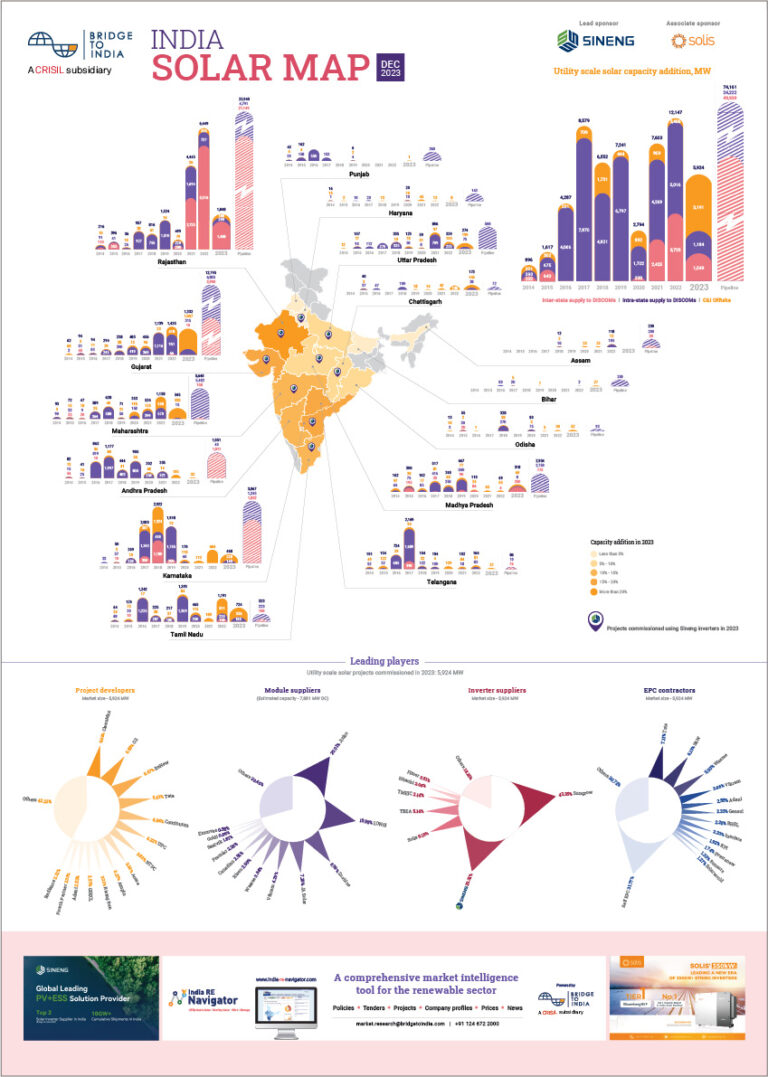Mr. Akhilesh Magal is the Head of Project Development at BRIDGE TO INDIA.
The government recently delayed announcing the NSM Phase 2 for lack of funds. In this blog post I discuss why the phase 2 may not see the light in 2013. The underlying reasons are:
- The fiscal deficit is alarmingly high at 5.3% of GDP and the government is serious about limiting it to 5%
- This means the government must spend less without jeopardizing their electoral chances just before the general elections in 2014
- This can be done by limiting all other subsidies except direct cash transfers to the poor (who form the majority of the Congress’ government’s vote-base) through the UID scheme
There are worrying signs that the NSM phase two will be indefinitely delayed due to lack of funds. The funds were supposed to have come from the National Clean Energy Fund (NCEF). Phase one of the NSM did not have such funding issues due to ‘Bundling of solar power’. Bundling meant that the government ‘mixed’ solar power with previously un-allocated conventional power from the National Thermal Power Corporation’s (NTPC) generating stations. Because solar power was bundled in a ratio of 1:4 with thermal power, the price increase was marginal and therefore passed along the consumer value chain.
However, under Phase 2, there is no more power available to bundle. This means, that the government would have to foot the bill for expensive solar power.
That is precisely the problem. The government does not want to. Why? Election politics. The government, especially finance minister P. Chidambaram, wants to reign in the fiscal deficit. The fiscal deficit is the difference between what the government earns (primarily in taxes and interest on deposits) and what the government spends. The fiscal deficit is already alarmingly large at 5.3% of GDP. India risks facing a downgrade if this remains un-checked. Diesel prices have already been raised and there are talks of a complete deregulation of diesel prices (similar to petrol prices). Just today, the government announced that diesel prices would be increased by INR 10 per litre for bulk purchases.
One needs to read these actions in the background of the election scheduled in 2014. Going by the current corruption riddled image, it seems highly likely the Congress government will come to power based solely on performance. The Congress government (with its voter base especially in rural India) needs as much funds as possible to buy their way into power in 2014. The Congress needs a philosopher’s stone. This is where the Universal Identification Card (UID) – used for direct cash transfer to the poor comes in handy. The Congress government is rushing the implementation of the Aadhar card, despite stern warnings from several NGOs and experts. It is cash for votes – only done under the legal framework. Given the extent of the direct cash transfer, it is no surprise that the government does not have funds for other projects – least for subsidizing renewable energy projects.
So the logic is pretty straightforward – limit fiscal deficit to 5% of GDP and allocate most subsidies through the direct cash transfer to the poor, win votes of the economically backward section of society and hope to come to power in 2014. Its goodbye solar mission at least for now.
What are your thoughts? Leave a comment below.












